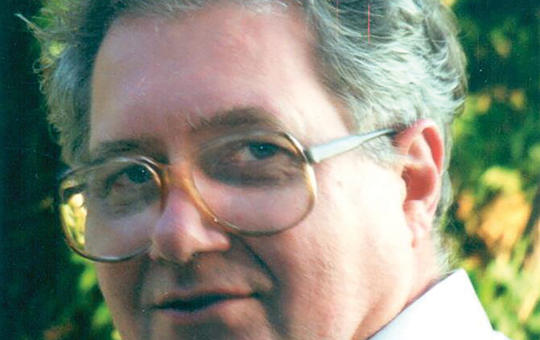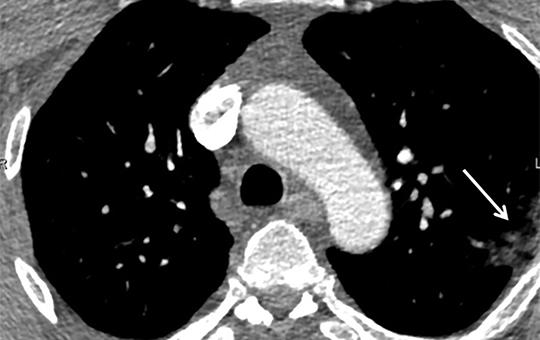The eLitMed.hu medical portal uses computer cookies for convenient operation. Detailed information can be found in the Cookie-policy.
Advanced search
You can set up what time period, journal, and metadata to search.
Number of hits: 10921
[Thrombolysis treatment and multi- disciplinary management of central retinal artery occlusion in comparison with traditional ophthalmological treatment options ]
[The management of central retinal artery occlusion (CRAO) has long been conservative therapy with limited efficacy carried out in ophthalmology departments together with etiological investigations lacking a standardised protocol. However, CRAO is analogous to ischemic central nervous system stroke and is associated with increased stroke risk, thus, systemic thrombolysis treatment and multidisciplinary management can be beneficial. Since May 2022, at Semmelweis University CRAO patients diagnosed within 4.5 hours are given intravenous thrombolysis therapy and undergo etiologic workup based on current stroke protocols. Here we report our experience with the multidisciplinary, protocol-based management of CRAO in comparison with former non-protocol based ophthalmological conservative treatment.
We reviewed CRAO patients’ data treated conservatively and with paracentesis within 6 hours at the Department of Ophthalmology between 2013 and 2022 including changes in visual acuity, neurological and cardiovascular findings compared to those in the thrombolysis project.
Of the 78 patients receiving non-protocol care, visual improvement was seen in 37% with natural course, 47% with conservative treatment and 47% with paracentesis. Four patients had significant carotid stenosis (2 underwent endarterectomy), 1 carotid dissection, 6 cardioembolism and 1 giant cell arteritis. Of the 4 patients within 4,5 hours, 3 gave their consent to the clinical trial and were treated with thrombolysis and underwent a full etiological assessment.
2 patients had improved visual acuity, 2 patients had significant carotid stenosis and underwent endarterectomy, 1 patient was started on anticoagulation for newly diagnosed atrial fibrillation.
CRAO patients presenting within 4,5 hours are rare and more patients are needed in our study to establish the efficacy of thrombolysis. However uniform protocollized evaluation helps identifying embolic sources thus, avoiding further and potentially more serious thromboembolic events.]
[Introduction of artificial intelligence based national decision support system to improve stroke care in Hungary ]
[Indication for recanalization therapy of acute ischemic stroke is based on imaging procedures. In order to minimize the time loss passing by recognizing the condition and the transfer of images to other facility, we established a stroke imaging network (eStroke network) supported by Artificial Intelligence (AI) in Hungary. Our study aims to present this system.
Organized by the National Institute of Mental Health, Neurology, and Neurosurgery (NIMNN), we included a total of 28 stroke centers, among them 4 thrombectomy centers. An earlier network of the University of Pécs and the widened network parallel with the NIMNN project cover 10 centers thus the service is now available in 38 stroke centers of this country. Stroke CT scans are automatically transmitted via the central teleradiology server to a central image processing server which analyzes the size of the ischemic area (ASPECT score), detects large vessel occlusion and it’s localization, analyzes the quality of collateral circulation and standard CT perfusion parameters using an AI based software (eStroke, Brainomix Ltd.). Results and processed images are sent automatically back to the PACS system of the sending institution and that of the concerning thrombectomy center and become available in anonymous form via cloud by desktop computers or mobile application.
During the first year of operation, the system has processed 38,060 scans of 16,276 patients. In NIMNN experience by samples of 65 and 152 cases, for drip and ship patients the time from the first alerting of the ambulance service, until arrival at the thrombectomy center was reduced by 38 minutes from 4:18 to 3:40 minutes.
Building an AI based central stroke imaging network for improving of stroke care’s results is technically feasible. Operation of the eStroke system is capable of reducing patient transportation times, however, further optimization is needed. ]
[Consensus statement of the Hungarian Clinical Neurogenic Society about the therapy of adult SMA patients]
[Background – Spinal muscular atrophy (SMA) is an autosomal recessive, progressive neuromuscular disorder resulting in a loss of lower motoneurons. Recently, new disease-modifying treatments (two drugs for splicing modification of SMN2 and one for SMN1 gene replacement) have become available. Purpose – The new drugs change the progression of SMA with neonatal and childhood onset. Increasing amount of data are available about the effects of these drugs in adult patients with SMA. In this article, we summarize the available data of new SMA therapies in adult patients. Methods – Members of the Executive Committee of the Hungarian Clinical Neurogenetic Society surveyed the literature for palliative treatments, randomized controlled trials, and retrospective and prospective studies using disease modifying therapies in adult patients with SMA. Patients – We evaluated the outcomes of studies focused on treatments of adult patients mainly with SMA II and III. In this paper, we present our consensus statement in nine points covering palliative care, technical, medical and safety considerations, patient selection, and long-term monitoring of adult patients with SMA. This consensus statement aims to support the most efficient management of adult patients with SMA, and provides information about treatment efficacy and safety to be considered during personalized therapy. It also highlights open questions needed to be answered in future. Using this recommendation in clinical practice can result in optimization of therapy.]
[Covid-19 associated neurological disorders]
[The clinical signs of SARS-CoV-2 infection has become more recognisable in recent times. In addition to common symptoms such as fever, cough, dyspnea, pneumonia and ageusia, less common complications can be identified, including many neurological manifestations. In this paper, we discuss three Covid-19 associated neurological disorders (Case 1: Covid-19 encephalitis, Case 2: Covid-19 organic headache, Case 3: SARS-CoV-2-infection and ischaemic stroke). We emphasize in our multiple case study that during the present pandemic, it is especially important for neurologists to be aware of the nervous system complications of the virus infection, thus saving unnecessary examinations and reducing the frequency of patients’ contact with health care personnel. ]
[Atherosclerosis: an ancient process in a new interpretation]
[The progress of atherosclerosis starts in childhood and lasts until the body dies. Most cardiovascular diseases and deaths can be traced back to atherosclerotic vascular changes. The process is thousands of years old, but its complex pathophysiology becomes recognized and realised only nowadays. Based on the evidence available today, atherosclerosis is such a chronic inflammatory disease of large- and medium-sized arteries, which is characterized by lipoproteins and immune cells transformed through oxidative and other changes and subendothelial accumulation of extracellular matrix. Innate and adaptive immunity provide a complex regulating system of atherogenesis, which while directing specifically the pro-atherogenic inflammatory and atheroprotective anti-inflammatory processes intensify plaque progression or even stabilize them respectively. With our growing knowledge about the pathology of atherogenesis, we can further improve the identification of cardiovascular risk conditions and apply more personalized therapeutic strategies.]
[The role of sleep in the relational memory processes ]
[A growing body of evidence suggests that sleep plays an essential role in the consolidation of different memory systems, but less is known about the beneficial effect of sleep on relational memory processes and the recognition of emotional facial expressions, however, it is a fundamental cognitive skill in human everyday life. Thus, the study aims to investigate the effect of timing of learning and the role of sleep in relational memory processes. 84 young adults (average age: 22.36 (SD: 3.22), 21 male/63 female) participated in our study, divided into two groups: evening group and morning group indicating the time of learning. We used the face-name task to measure relational memory and facial expression recognition. There were two sessions for both groups: the immediate testing phase and the delayed retesting phase, separated by 24 hours. 84 young adults (average age: 22.36 (SD: 3.22), 21 male/63 female) participated in our study, divided into two groups: evening group and morning group indicating the time of learning. We used the face-name task to measure relational memory and facial expression recognition. There were two sessions for both groups: the immediate testing phase and the delayed retesting phase, separated by 24 hours. Our results suggest that the timing of learning and sleep plays an important role in the stabilizing process of memory representation to resist against forgetting.]
[Digitally-assisted treatment planning in precision oncology]
[The progress of molecular information based on personalized precision medicine has reached a new milestone. Actually, about 6 million mutations of 600 genes may be related to the development of cancer, and on average, 3-4 of these “driver” mutations are present in each patient. Due to the progress in molecular diagnostics, we can now routinely identify the molecular profile of tumors in clinical settings. By clinical translation, there are actually available more than 125 targeted pharmaceuticals and hundreds of such therapies are under clinical trial. As a result, we have many first-line and licenced treatment options to be elected by molecular information as the optimal one for every patient. There is an increasing need for complex informatics solutions by medical software. Geneticists, molecular biologists, molecular pathologists, molecular pharmacologists are already using bioinformatics and interpretation software on their daily work. Today, online digital tools of artificial intelligence are also available for physicians for assisted treatment planning. Telemedicine, videoconferencing provide solutions for interdisciplinary virtual molecular tumor boards, which democratizes the access to precision oncology for all doctors and patients. ]
1.
Clinical Neuroscience
[Headache registry in Szeged: Experiences regarding to migraine patients]2.
Clinical Neuroscience
[The new target population of stroke awareness campaign: Kindergarten students ]3.
Clinical Neuroscience
Is there any difference in mortality rates of atrial fibrillation detected before or after ischemic stroke?4.
Clinical Neuroscience
Factors influencing the level of stigma in Parkinson’s disease in western Turkey5.
Clinical Neuroscience
[The effects of demographic and clinical factors on the severity of poststroke aphasia]1.
2.
Clinical Oncology
[Pancreatic cancer: ESMO Clinical Practice Guideline for diagnosis, treatment and follow-up]3.
Clinical Oncology
[Pharmacovigilance landscape – Lessons from the past and opportunities for future]4.
5.












